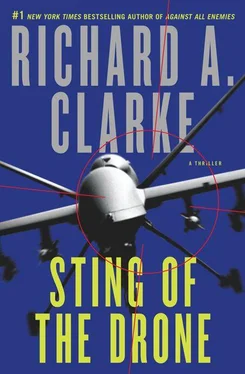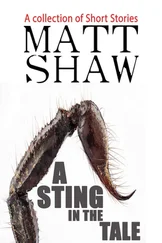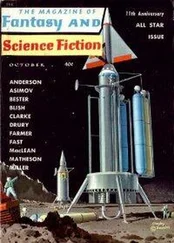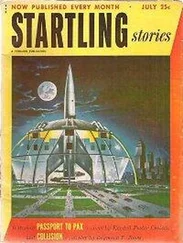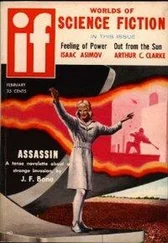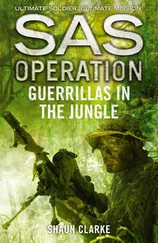He had told Fred Garrison in New York that they were driving out into the country. Garrison had expected a call in from them last night when they returned to the hotel. By now Garrison had probably called the embassy. Maybe the embassy could get someone in the Yemeni Security Service on the phone. Maybe Garrison would give someone in the U.S. Government their mobile phone numbers to track them. That would get them to where the roadblock had been, but they were at least an hour away from there now.
He tried to remember whether AQAP took ransom money when they kidnapped Westerners. Or did they just kill them? He thought of the pictures of Danny Pearl from The Wall Street Journal being decapitated in Pakistan. Bryce shuddered. He tried to take control of where his mind went. He willed himself to think of breakfast at the Tim Hortons near campus. He dozed again.
Bryce jolted awake as the door flew open and hit the wall. Bright light streamed in, as did the men, four of them with balaclavas hiding their faces. The leg irons came off and he was lifted. They were in a corridor, then a small, bright courtyard. Fares sat at a table with another man. Bryce was forcefully seated at the table. He made eye contact with Fares, who stared back, wide eyed.
“Wash your hands before you eat,” the man at the table said in British-accented English. He pushed a bowl of water toward Bryce and handed him a small towel. Bryce noticed a second bowl, with fruit.
“You are CIA, yes?” the man asked. He looked to be in his forties, his bushy beard already speckled with gray.
Bryce tried to answer, but his throat cracked from the dryness. The man pushed a glass toward him and Bryce eagerly took it and swallowed the carrot juice.
“No, WWN. World Wide News,” Bryce said. “I am a Canadian citizen.”
The man nodded his head, agreeing. “Yes, yes. I saw the passport. And your bio on the WWN Web site says you went to the University of Toronto. Still, you could be CIA. They told us to expect you.”
“I’m sorry, who told you what?” Bryce asked, reaching for a banana.
“We have mutual acquaintances in Pakistan, Mister Duggan, but I wanted to be sure for myself what you were doing here, what your report would say.” The man rose from the table as a boy appeared with flat bread and a teapot. “I watched your videotape this morning. It tells the truth. But now you can say that you met with an AQAP leader, Mr. Duggan, and he told you that the drones are bringing us more brothers than anything we ever tried.”
Two men with AKs appeared in the courtyard. “They will take you to your vehicle,” the older man said as he left the courtyard. “The drones are working, CIA man. They are recruiting for us.”
TUESDAY, OCTOBER 27
PEG HEADQUARTERS
NAVY HILL
WASHINGTON, DC
On the Big Board, they could see the speedboat. It was doing twenty-eight knots when the boat driver cut the engine and began to ease the boat toward the back of the yacht. From twelve thousand feet above, the camera on the Global Reach drone zoomed in on a face. “Facial Recognition Confirmation,” the CIA officer said from Virginia, “Abu Yahya al Yemeni, the head of al Qaeda in the Arabian Peninsula. That means our source may be right. The heads of the two biggest al Qaeda affiliates, Somali Shabab and AQAP, al Qaeda in the Arabian Peninsula, meeting each other. This could be big.”
Ray Bowman had just joined the Kill Call. “We’ve seen indications of those two AQ groups coordinating, doing mutual support, but if their two top guys are meeting, they must be planning something more. Have you seen any of the Shabab guys on the yacht yet?”
“No, we got here by following Abu Yahya’s speedboat. Haven’t been looking at the yacht,” Erik responded. With Sandra Vittonelli in the air flying back to Las Vegas from Washington, Erik Parsons was running the Kill Call from the GCC.
“So we don’t know whether there are civilians on the boat?” the Justice Department lawyer asked.
“Actually, we will shortly,” the CIA officer said from Virginia. “Our source, and this is ultrasensitive, is actually the speedboat driver. He’s supposed to go on board and check it out, then signal us. Can’t do better than that. Human eyes on target.”
“Okay, keep circling. Try to see through the windows on the yacht,” Ray suggested.
“We can do better than that. Remember this is the big drone, Global Reach. It carries all sorts of tricks, including an audio collection mini-drone. We might be able to pick up conversation using its laser parabolic microphone,” Erik said.
“Do it,” Ray replied. “Have it drop its mini-drone.”
Twelve thousand feet over the Indian Ocean, a panel slid back on the bottom of the large drone. A rotary launcher inside the aircraft spun, until the mini-drone was in position to be dropped. When it was released, the mini-drone fell toward the water, a small parachute opening at one thousand feet above the surface. As soon as the parachute had slowed the fall, a propeller on the rear of the fuselage started up. The parachute broke away from the drone, which pushed forward toward the yacht, twenty-two kilometers ahead.
“Let’s hope they didn’t see that,” Ray said.
“Very unlikely,” the Pentagon officer on the call replied.
On the Big Board, Erik could see the speedboat pulling away from the yacht. Only the boat driver appeared to be on board. A few minutes later, Erik heard the CIA voice on the speaker, “Just signaled us with a data burst on his cove comm. Four crew, six shooters, two principals. That’s all he says are on the yacht.” The source had gone on board, looked around, left on the speedboat, and used a CIA-provided covert communications device to beam an encrypted, data compressed message up to a satellite and down to CIA Headquarters.
“Does he say the Shabab guy is there?” Ray asked.
“That’s all I got,” the CIA answered.
“We’ve programmed the mini-drone to circle the yacht and throw its laser against windows and generally to search for conversation,” Erik reported. “The laser beam is invisible to the human eye and the bird has the chameleon skin, so they shouldn’t see it. Any audio will be fed from here straight to NSA for translation.”
The minutes dragged. The image from the Global Reach drone stayed on the screens in each of the operation centers as the big drone flew circles over the ocean. It could stay up for two days from its base in Djibouti on the Red Sea, or from the airfield in Seychelles, in the Indian Ocean. What its sensors collected was beamed by radio up to a satellite in a stationary orbit above the Indian Ocean. From there it was relayed by laser beam to another satellite parked over the U.S. and then down to the GCC, outside of Las Vegas. The GCC then routed it out over a high-speed fiber-optic cable to NSA in Maryland, CIA in Virginia, and five offices in or near Washington: the White House, the State Department, the Justice Department, the Pentagon, and the Policy Evaluation Group.
“Okay, here’s our analysis,” the voice from NSA said. “We have detected four distinctly different adult male voices. We have detected no female voices, no children. It’s difficult to maintain continuity on a conversation because the bird keeps moving, but we did hear one snippet between what we think is a Somali and the Yemeni. They’re talking in English. Makes sense. The Somali probably doesn’t speak Arabic. Here it is: ‘At the same time as the Taliban hits, we go and you go.’ That’s all we caught of that.”
The main camera on the Global Reach zoomed in on two men sitting on the fan deck on the yacht’s stern. “Facial recognition of these two,” the voice from the CIA said. “Abu Yahya from AQAP and Ibrahim Afrah from Shabab.”
Читать дальше
